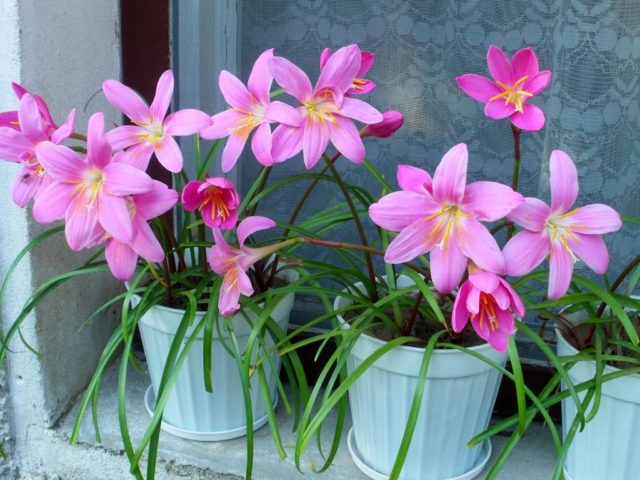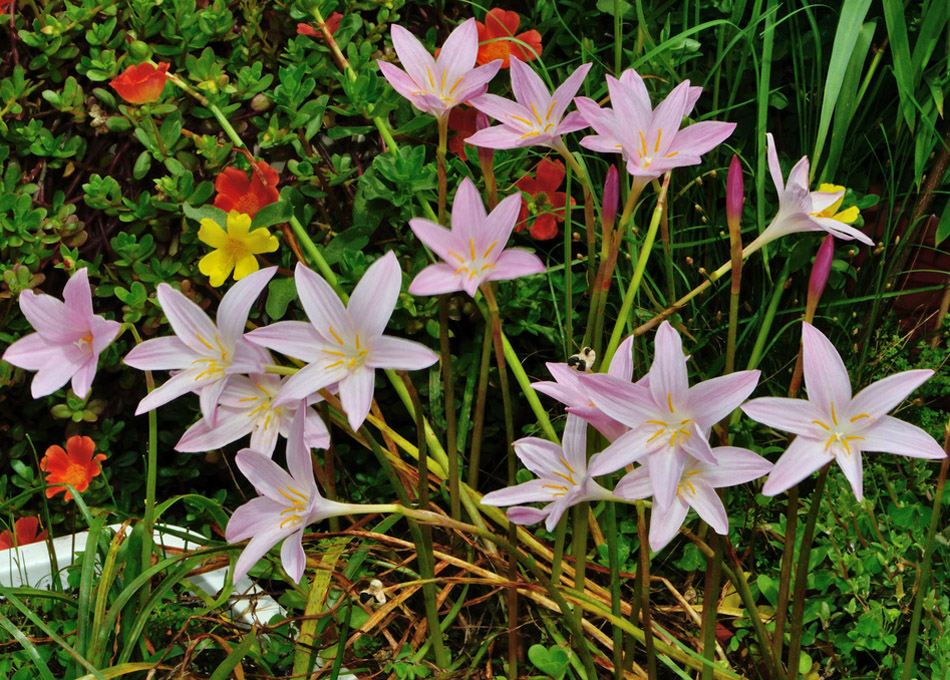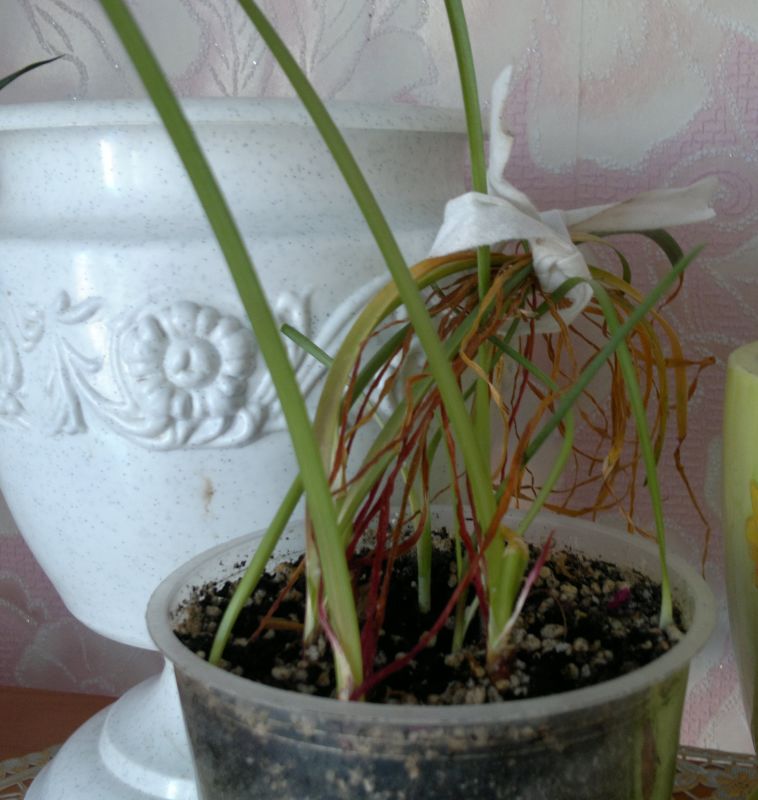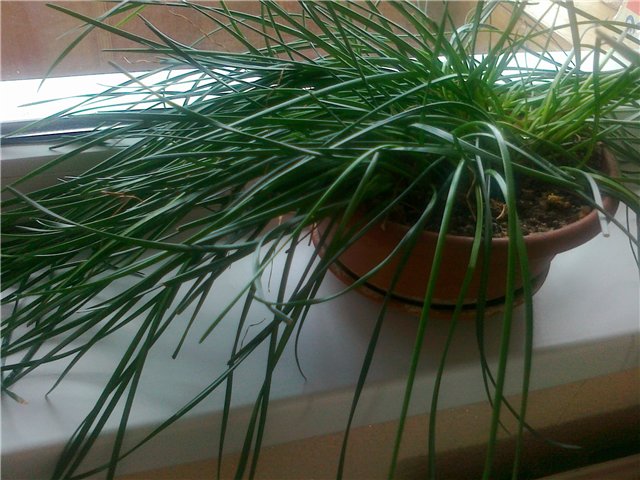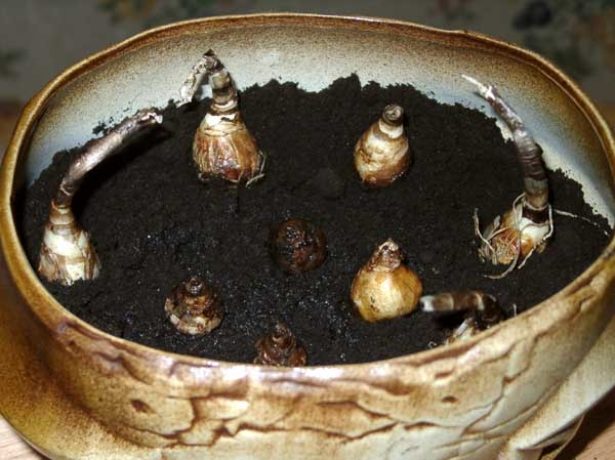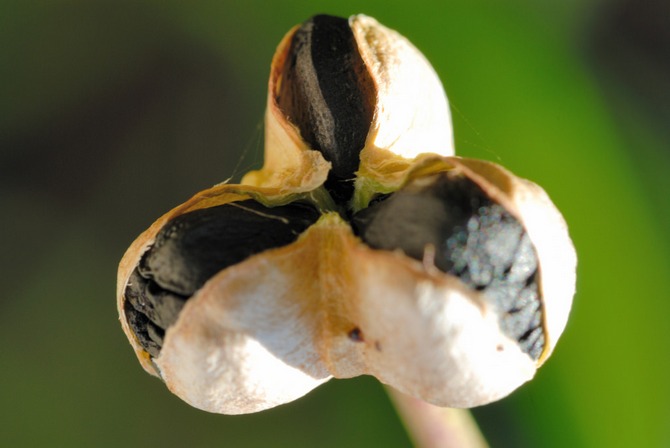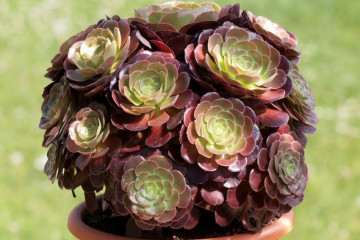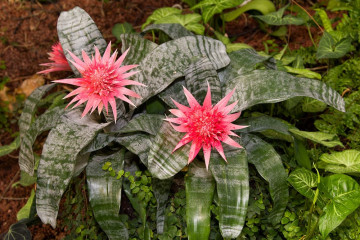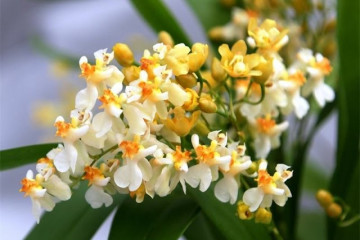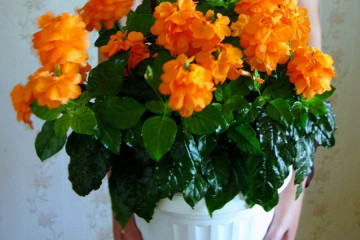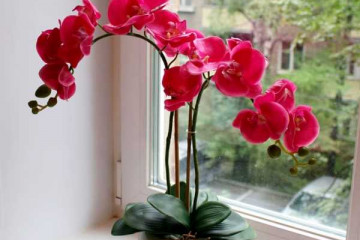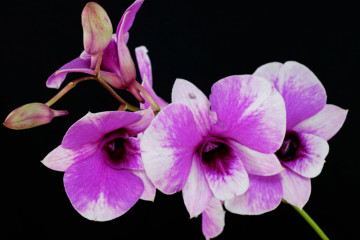Types of flower zephyranthes - home care
Content:
Many call this houseplant "upstart" because of its ability to suddenly throw out a flower. It can also be planted outdoors.
To grow zephyranthes, home care is organized according to all the rules.
Description of popular varieties
In the Amaryllis family, there are about 40 species of zephyranthes. About 10. The flower of the west wind (as the name is translated) refers to bulbous perennials. One bush throws out several peduncles with delicate petals.
Zephyranthes grows rapidly, covering the entire flower bed with a fragrant carpet. Using different types of upstart, you can decorate the rabat with original patterns. The colors look great on the windowsill.
All types of upstart zephyranthes are equally active. Many, blooming in April, are fragrant all summer long. Despite the general characteristics, the varieties have certain characteristics.
Popular types of zephyranthes
| Name | Specifications |
| Powerful | Zephyranthes robustus has a bulb at least 4 cm in diameter. On a corolla of medium size, there are long petals of a pleasant pastel pink shade. Blooms from April to July, retires in autumn |
| Multicolored | It stands out for its unusual color of flowers with a diameter of 6-7 cm. At the base, the petals are red or brown, along the edges of the white plates are framed with a delicate pink. Indoor upstart blooms in the cool season - from January to the end of March |
| Zephyranthes Atamas | Little lilies prefer cool rooms. They have a small onion (up to 2 cm) with a shortened neck. The rosette grows from 6 to 8 tubular leaves 15-20 cm long. Snow-white petals frame a core of yellow stamens |
| Golden | The yellow marshmallow blooms in early winter. Funnel-shaped flowers are framed by dense shoots of narrow leaves up to 30 cm long.The plant is characterized by a rounded bulb |
| Large-flowered | Due to the shade of the buds, the species is called pink zephyranthes. The yellow core looks beautiful against the background of delicate petals. An oblong bulb with a diameter of up to 3 cm produces single flower stalks with large buds (7-8 cm). The height of thin sheets varies from 15 to 20 cm |
| Zephyranthes white | The candida upstart reaches a height of 30 cm. Snow-white funnel-shaped flowers up to 6 cm in diameter bloom in July and delight the eye until October. On a medium-sized bulb (3 cm in diameter), the neck is elongated |
To properly care for zephyranthes: powerful pink, multi-colored, snow-white, large-flowered, etc., it is necessary to take into account the periods of rest and flowering of each species.
Basic care instructions
Growing zephyranthes is not difficult due to the unpretentiousness of the plant. Still, it is necessary to consider the conditions in which the upstart develops. It is easier to provide comfort indoors, compared to an open flower bed.
Houses
Features of home care
| Mode | Recommendations |
| Watering, air humidity | Bulbous plants are sensitive to excess moisture. Waterlogging of the soil must not be allowed. Therefore, water the upstart only when the topsoil dries up.
Water is used warm, soft, its amount is taken taking into account the growing season: · Abundant watering during flowering; · After the fragrance, water procedures are reduced; · When the aboveground part of the plant wilts, it is hardly watered. In hot weather, the air humidity is maintained with a fine-mesh sprayer. |
| Lighting and temperature | An upstart houseplant needs an abundance of light, but the zephyranthes burns from the direct rays of the sun;
· Flower pots are displayed on windows oriented to the west and east. The southern ones are covered with curtains or blinds; The flower needs a temperature of 25 ° for vigorous growth, but most varieties prefer a cool climate. During the rest period, the degrees are reduced to + 10-15 (maximum 18) |
| Food | Due to the long flowering, zephyranthes spends a lot of energy. Therefore, top dressing is mandatory, they are introduced according to the following scheme, using a complex mineral water:
After dormancy, fertilize every 2 weeks; · During the flowering period - after 10 days; · After wilting, lilies return to their previous regime. Finish feeding the upstart when the ground part is completely dry |
When grown outdoors
An upstart feels comfortable in flower beds only in a warm southern climate. In order for zephyranthes to bloom actively, planting and care in the open field are carried out taking into account the requirements:
- transfer the plant to a flower garden with the onset of summer;
- fertile soil is prepared in advance, ensuring good air permeability;
- the onions should not be completely planted in the ground - the neck of the flower should look out above the surface;
- no watering can is used to water the flower bed - water is supplied directly to the roots;
- after water procedures, the soil is loosened;
- as soon as the zephyranthes bloom, they feed him.
In the fall, the upstart is dug up, transferred to a dry room and waiting for the ground part to dry out. After trimming the tops, the bulbs are placed in a cardboard container, sprinkled with sawdust and stored at room temperature until spring.
During flowering
Agricultural techniques always depend on the stage of plant development. So in caring for a zephyranthes, they look at what stage it is: waking up, blooming, or getting ready for rest.
How to properly care for an upstart flower at home in the active phase is mentioned above. It is worth touching on the sleep period in more detail.
Zephyranthes at rest
Each plant species has its own time to retire. There are also representatives in the family who ignore this phase. The fact that the upstart needs rest can be understood by the dried leaves.
The plant is transferred to a cool, dry, dark room, keeping the temperature there at no lower than + 5 ° C. During this period, the flower does not need watering, but the soil is still periodically moistened with settled water so that the bulbs do not dry out.
Some species are at rest for a couple of months, others - the entire cold period. Therefore, the flower pot is constantly checked. As soon as leaves appear on the bulb, the upstart is taken out of the "confinement".
The plant is placed closer to the light, watered abundantly and fed. If the care of the resting flower was correct, buds will appear on it soon.
If it does not bloom at home
The perennial smells fragrant every year. Inexperienced farmers sometimes ask why Zephyranthes does not bloom, although he was given enough attention.
How to get upstart flowering
| Why does not it bloom | What to do |
| Too large a pot makes the plant "fatten" to the detriment of budding | Transplanting into a smaller container is required - the plant should feel slightly oppressed |
| Incorrect lighting | · If the flower is in the shade, it is transferred closer to the light;
In the opposite situation, when direct sunlight is directed at the plant, provide a little shading |
| The bulb is too deep | To make the upstart bloom, the root collar is gently freed from the ground. |
| Excess nutrients | Regulate the frequency and amount of fertilization |
Does not bloom outdoors
The conditions on the flowerbed are completely different. If the flaw was made initially, it is difficult to fix it. It is better to take a number of measures in advance so that the upstart blooms in the open field:
- take only dense bulbs, without signs of rot, with dry scales;
- for half an hour before planting, keep the onions in the Maxim solution;
- properly prepare the holes - with a drainage layer of pebbles (gravel) and sand.
The chances of blooming will increase if the bulbs are kept in a flowerpot for a couple of weeks.
Insect pests, methods of dealing with them
Parasites rarely annoy the flower of zephyranthes. If not cared for properly, some insects harm the upstart. The plant itself will signal their appearance.
The main pests of zephyranthes
| Insect | Signs of an invasion | Measures |
| Amaryllis scale | It feeds on flower sap, as a result of which the leaves begin to turn yellow, wither and fall off | The plant is treated with an insecticide. If the bulb is severely damaged, it is destroyed. |
| Whitefly | A whitish small moth is clearly visible on the underside of the plate. Signs of harm are not immediately apparent | Sprayed with a chemical, then taken out into a cool room. Due to the dislike of low temperatures, the pest will leave the plant itself |
| False shield | The 4 mm convex insect catches the eye immediately | Begin with mechanical removal, wiping the foliage with soapy water. They process a window, a window sill, a flower pot. Then the upstart is sprayed with insecticide |
| Spider mite | Withering leaves and a cobweb on the plant will tell you about the appearance of a sucking insect. | Affected flower is treated with a chemical |
To avoid insect infestation, the room maintains optimal humidity and temperature conditions. The insecticide is also used for preventive purposes, without waiting for the appearance of pests.
Transplantation and reproduction of zephyranthes
It is enough to have one pot with an upstart in the house, so immediately there is a desire to decorate all window sills with flowering mini-flower beds. Lily is easy to propagate using one of the proposed methods.
Children
An upstart always gives a lot of children, who are separated in the fall and planted in pots. The first container should be low but wide so that the sprouts feel comfortable.
You should not plant small onions separately, several pieces are determined at once in one container (maximum 10). At the same time, they pay attention to the shape of the baby:
- onions with a short neck are completely immersed in the ground;
- in elongated ones, the neck should protrude slightly above the surface.
A good layer of drainage is poured into the bottom of the pot. The soil is selected loose, fertile. It is recommended to use turf soil, sand and humus, taken in equal amounts.
Growing from seeds
This breeding method is more troublesome. If in the first version the upstart will please with flowering already next season, then when using seeds, the first buds will appear after 3 years.
In order for zephyranthes to reproduce in this way, artificial pollination of flowers will be required. A ripe seed can be obtained after 2 months, it must be used immediately for sowing.
The upstart is sown in a shallow bowl with an interval of 2-3 cm.The substrate is chosen the same as for reproduction by children, supplemented with peat.
For active germination of seeds, the container is covered with a transparent film, placed in a darkened place at a temperature of at least + 22 ° C. After 3-4 weeks, when shoots appear, the container is transferred to the light and the shelter is removed.
Zephyranthes is a beautiful delicate plant that can bring joy to any home. The upstart reproduces easily, so it will be an excellent gift for loved ones.
